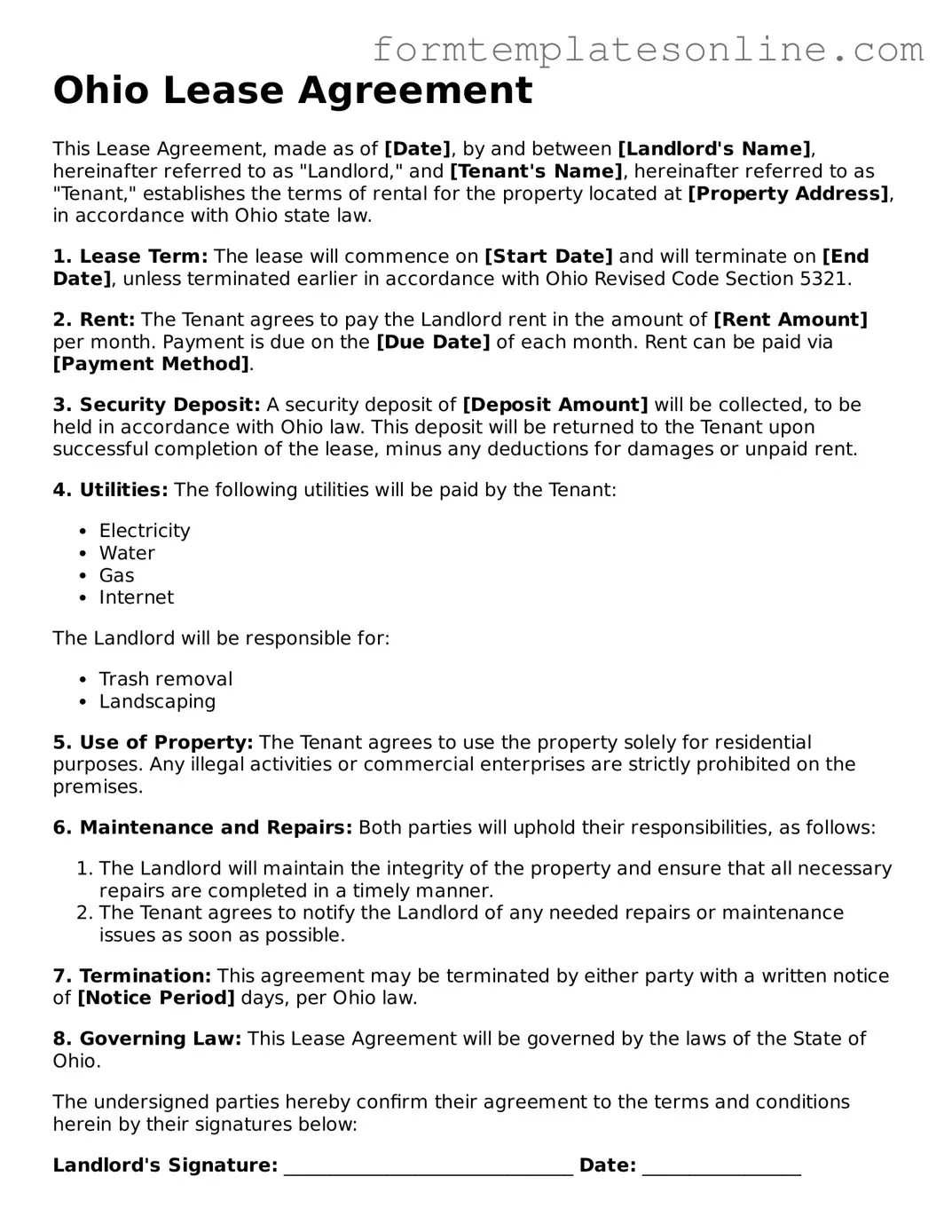What is an Ohio Lease Agreement form?
The Ohio Lease Agreement form is a legal document that outlines the terms and conditions under which a landlord rents property to a tenant. This agreement specifies the rights and responsibilities of both parties, including the duration of the lease, rental payment details, and maintenance obligations.
What are the key components of an Ohio Lease Agreement?
Key components typically include the names of the landlord and tenant, property address, lease term, rent amount, payment due dates, security deposit information, maintenance responsibilities, and provisions for terminating the lease. Each of these elements plays a critical role in ensuring clarity and preventing disputes.
Is a written lease required in Ohio?
While Ohio law does not mandate a written lease for all rental agreements, it is highly recommended. A written lease provides clear documentation of the terms agreed upon, which can be crucial in case of disputes. Oral agreements can lead to misunderstandings and are harder to enforce.
How long can a lease last in Ohio?
Leases in Ohio can vary in length. They can be short-term, such as month-to-month agreements, or long-term, lasting for a year or more. The duration should be clearly stated in the lease agreement to avoid any confusion regarding the rental period.
What happens if a tenant does not pay rent?
If a tenant fails to pay rent, the landlord has the right to initiate eviction proceedings after providing proper notice. Ohio law requires landlords to give a tenant a written notice to vacate, typically allowing three days for payment before further action can be taken.
Can a landlord increase rent during the lease term?
Generally, a landlord cannot increase rent during the lease term unless the lease explicitly allows for such increases. Rent increases are typically addressed in the lease agreement and must comply with Ohio law regarding notice periods.
What is a security deposit, and how is it handled in Ohio?
A security deposit is a sum of money collected by the landlord to cover potential damages or unpaid rent. In Ohio, landlords may charge up to one month's rent as a security deposit. Upon termination of the lease, the landlord must return the deposit within 30 days, minus any lawful deductions for damages or unpaid rent.
Are there specific disclosures landlords must make in Ohio?
Yes, landlords in Ohio are required to disclose certain information to tenants. This includes lead paint disclosures for properties built before 1978, information regarding the presence of bedbugs, and details about any known environmental hazards. These disclosures help ensure tenant safety and informed decision-making.
What rights do tenants have under Ohio law?
Tenants in Ohio have several rights, including the right to a habitable living environment, the right to privacy, and the right to receive proper notice before eviction. Tenants can also seek legal remedies if landlords fail to uphold their responsibilities as outlined in the lease agreement.
Can a lease be terminated early in Ohio?
Yes, a lease can be terminated early under certain conditions, such as mutual agreement between the landlord and tenant, or if the tenant has experienced domestic violence. It is important for both parties to review the lease terms and any applicable laws to understand the process and implications of early termination.
